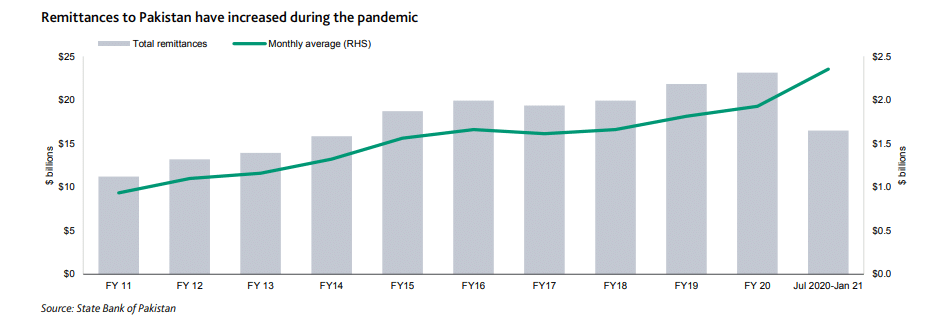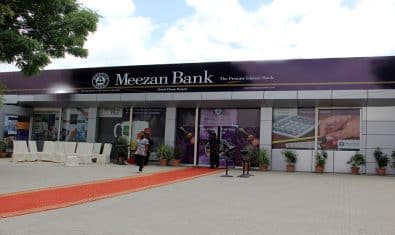The State Bank of Pakistan (SBP) reported that the monthly workers’ remittances for the seven months of the current fiscal year 2021 (July 2020 to January 2021) had increased by 24.1 percent to $16.5 billion.
Moody’s, a credit rating agency in its latest report has stated that the increased remittances are credit positive for Pakistani banks and United Bank Ltd. (UBL) in particular (B3 stable, b3) which had a leading market share of around 24 percent of remittances as of 30 September 2020, because they support deposit inflows and foreign currency liquidity.
However, they are contrary to the SBP’s expectation that the pandemic would keep remittances flat, and opposed to the World Bank’s forecast of a sharp decline in global remittances, it added.
ALSO READ
SBP Makes Digital and Card Transactions More Secure and Easier
Moody’s stated that higher household incomes because of remittances also create new lending opportunities for banks, and support households’ debt repayment capabilities. Increased remittances contribute to higher domestic deposits while providing banks with stable and low-cost funding and enhancing their foreign-currency liquidity.
The credit rating agency noted that deposit inflows will also mitigate the effect of the government deposit outflows once the Treasury Single Account (which requires federal government deposits to be placed with the SBP rather than commercial banks) is fully operational.
“The increased remittances support Pakistani households’ disposable incomes and borrowers’ repayment capacities while reducing the potential for nonperforming loans (NPLs). Pakistani banks’ consumer lending has historically outperformed lending to companies, and the consumer loan NPLs accounted for 4.9 percent of gross loans as of 31 December 2020, as compared to 9.4 percent for the corporate loans,” said Moody’s.
“Increased remittances and the resulting growth in household incomes are also likely to facilitate increased mortgages, small and midsize enterprises, and agricultural lendings that are all important components of the government’s financial inclusion targets,” added the report.
ALSO READ
FBR Signs Historic Customs Cooperation Agreement with Tajikistan
Moody’s further added that the greater use of digital channels, combined with the Pakistan Remittances Initiative2 which facilitates faster and cheaper remittance flows, fueled increased remittances in recent years. Meanwhile, the pandemic-induced limitations on travel, including reduced traveling to the Kingdom of Saudi Arabia for the annual Hajj pilgrimage, aided the sharp increase in remittances in recent months.
Overseas Pakistani workers have saved more money and traveled less to Pakistan, thus increasing their capacity to remit via official sources. Similarly, overseas job losses as a result of the pandemic have led to increased repatriations.
Moody’s stated, “We do not expect such high remittance growth levels to persist, but believe remittances have the potential to increase in coming years, supported by the Pakistan Remittances Initiative and technical advances that materially reduce transaction costs, particularly for remittances through electronic and official channels”.
Remittances from overseas Pakistanis residing in the Gulf states had accounted for around 60 percent of the total inflows, followed by 13 percent from the UK, nine percent from the EU, and 9 percent from the USA.
According to World Bank estimates, Pakistan was the seventh-largest recipient of remittances globally in 2020, with remittance inflows comprising approximately nine percent of the GDP.


























